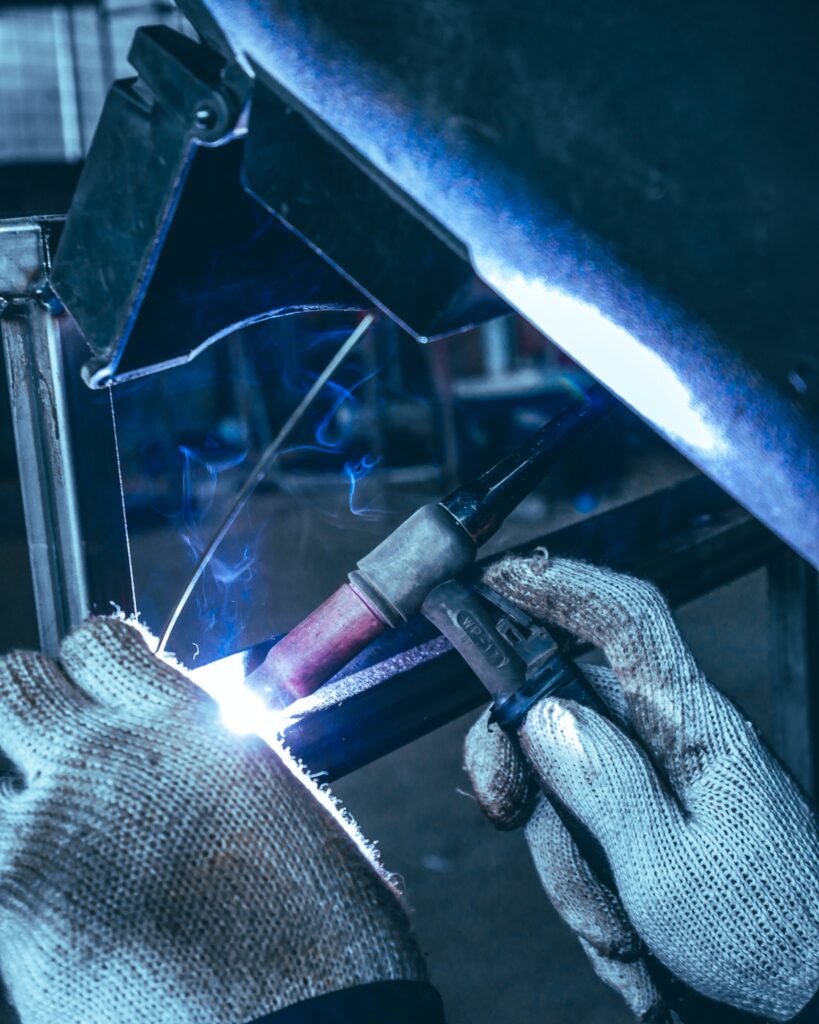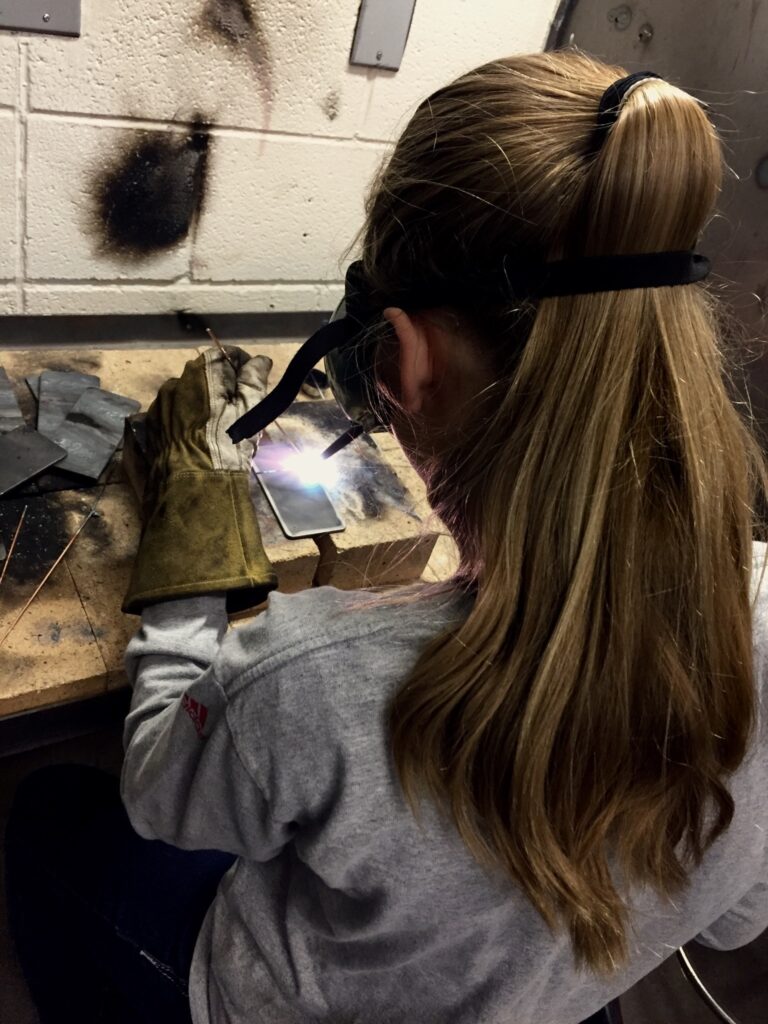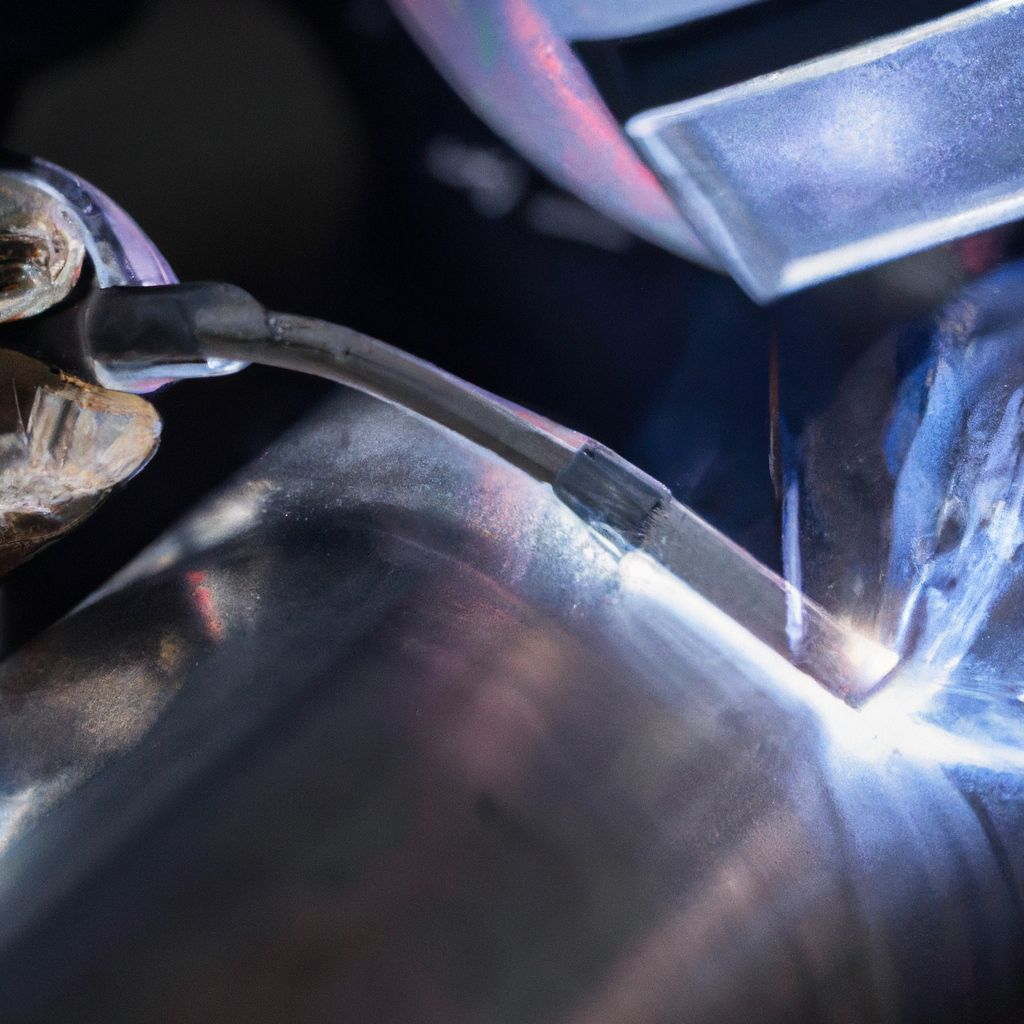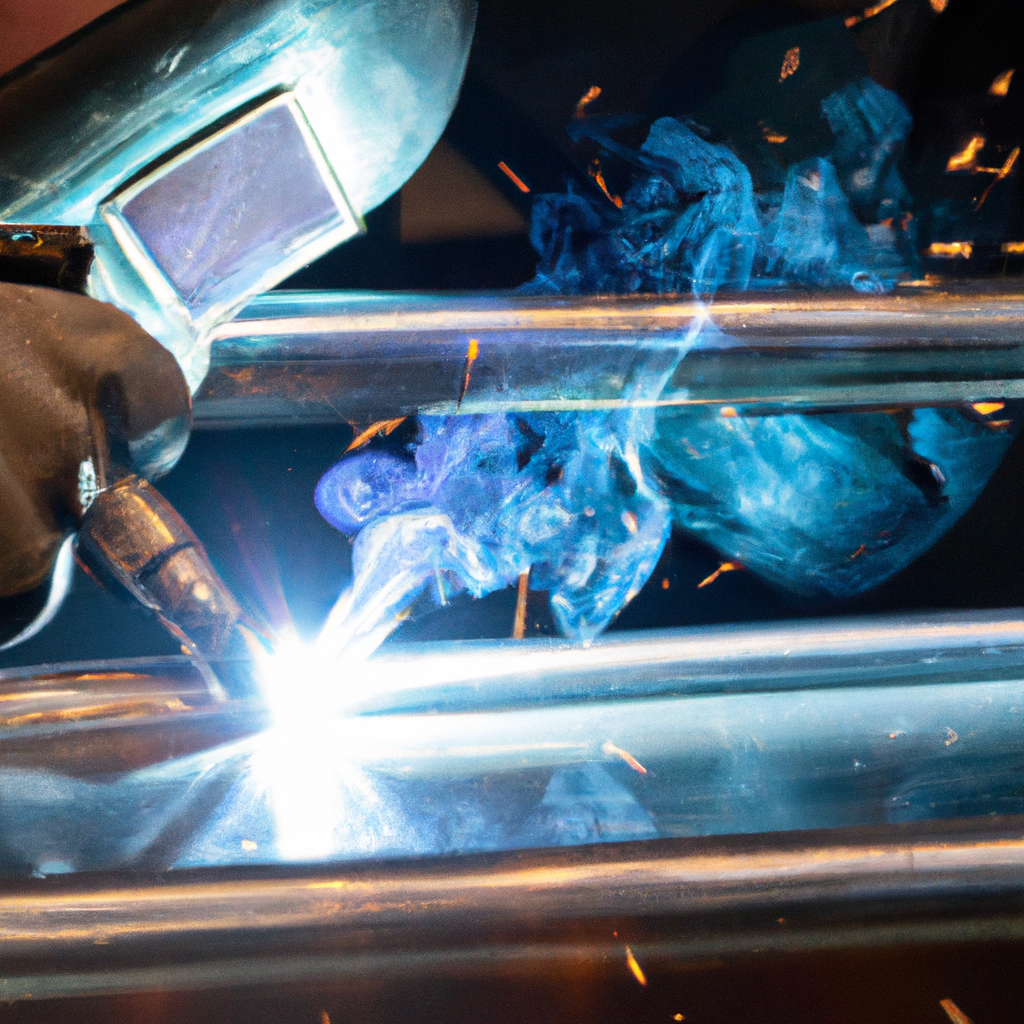So you’ve decided to take up welding as a new hobby or maybe even pursue it as a career. But here’s the thing – you’re faced with a crucial decision right from the start: should you begin with a MIG welder or a TIG welder? It can be overwhelming when you’re just starting out and trying to figure out which option is best for you. Don’t worry, though, because in this article, we’ll break down the pros and cons of both MIG and TIG welding to help you make an informed decision. By the end of this read, you’ll be equipped with the knowledge you need to kickstart your welding journey with confidence.

Understanding Welding
Defining welding
Welding is a process that involves joining materials, typically metals or thermoplastics, together by melting and fusing them. It is a vital technique used in various industries, including construction, manufacturing, automotive, and aerospace. The process creates a strong bond between the materials, allowing for the fabrication of complex structures and components.
Types of welding processes
There are several types of welding processes, each with its own merits and applications. Some of the most common types include MIG (Metal Inert Gas) welding, TIG (Tungsten Inert Gas) welding, stick welding, and oxy-fuel welding. These processes differ in terms of the energy source used, the materials they can join, and the techniques employed during the welding operation.
Welding as a skill and profession
Welding is not just a technique; it is also a highly valued skill and profession. Skilled welders are in demand in industries worldwide, as they play a crucial role in the creation and maintenance of infrastructure, machinery, and products. Welders must possess a deep understanding of various welding processes, safety procedures, and equipment to ensure precise and efficient welding operations.
Introduction to MIG Welding
History and development of MIG welding
MIG welding, also known as Gas Metal Arc Welding (GMAW), was developed in the 1940s as a response to the need for a faster welding process in shipbuilding during World War II. It gained widespread popularity due to its versatility and efficiency. Initially, the process involved using a bare wire electrode and a shielding gas mixture to protect the weld from contamination. Over time, advancements in technology led to the introduction of solid wire electrodes and more advanced shielding gases, further improving the quality and speed of MIG welding.
How MIG welding works
MIG welding works by feeding a consumable electrode wire through a welding gun. Simultaneously, a shielding gas, such as argon or a mixture of argon and carbon dioxide, is released to protect the weld zone from atmospheric contamination. The wire serves as both the heat source and the filler material, melting and fusing with the base metal to create a strong weld. MIG welding is known for its ease of use and versatility, making it suitable for a wide range of applications.
Tools and equipment for MIG welding
To engage in MIG welding, you will need several essential tools and equipment. These include a MIG welding machine, a welding gun with a contact tip, a suitable gas cylinder with a regulator and flow meter, a wire feeder, and a grounding clamp. Additionally, you will require a welding helmet, gloves, and protective clothing to ensure your safety during the welding process. It is crucial to have the correct tools and equipment to achieve optimal results and maintain a safe working environment.
Understanding TIG Welding
The principle behind TIG welding
TIG welding, also known as Gas Tungsten Arc Welding (GTAW), utilizes a non-consumable tungsten electrode and a separate filler material. The electrode heats the base metal, while a shielding gas, typically argon, protects the weld pool from contamination. TIG welding allows for precise control over the welding process, making it suitable for intricate and critical applications where aesthetics and precision are essential.
Development of TIG welding
TIG welding traces its roots back to the 1930s when Russell Meredith created the first practical form of the process. Initially used for welding magnesium in aircraft production, it gradually gained popularity for its versatility in welding aluminum, stainless steel, and other metals. Over time, advancements in technology led to improvements in TIG welding machines, power sources, and electrode materials, making it one of the most widely used welding processes today.
TIG welding tools and equipment
To engage in TIG welding, you will need specific tools and equipment. These include a TIG welding machine, a TIG torch with a non-consumable tungsten electrode, a gas cylinder with a flow meter and regulator, and a foot pedal or fingertip control to regulate the welding current. Additionally, you will require a welding helmet with a specialized lens for TIG welding, gloves, and protective clothing. Acquiring the necessary tools and equipment is essential to ensure successful TIG welding and personal safety.
Differences between MIG and TIG Welding
Process and technique differences
MIG welding and TIG welding differ significantly in their processes and techniques. MIG welding is an automated process where a continuous wire electrode is fed into the weld pool, while TIG welding is a manual process where the welder controls both the electrode and the filler material. MIG welding allows for faster and more efficient welding, while TIG welding offers greater precision and control. The choice between the two depends on the specific requirements of the welding project.
Different purposes and end products
MIG welding is commonly used for welding thick materials or in applications that require high productivity, such as automotive manufacturing and construction. In contrast, TIG welding is often preferred for thin materials, intricate designs, and critical applications where the weld appearance and quality are vital, such as aerospace and food processing industries. Understanding the intended purpose and desired end product is essential in deciding whether to choose MIG or TIG welding.
Comparing the efficiency and speed of MIG and TIG welding
When it comes to efficiency and speed, MIG welding generally outperforms TIG welding. MIG welding allows for continuous and rapid welding, making it ideal for projects that require high productivity. On the other hand, TIG welding is a slower process due to its precision and control requirements. While MIG welding is faster, TIG welding excels in creating high-quality welds with exceptional aesthetics and minimal post-weld cleaning.

Safety considerations for MIG and TIG Welding
Safety gear and precautions for MIG welding
When engaging in MIG welding, it is crucial to prioritize safety. The use of proper safety gear, such as welding helmets with appropriate lenses, gloves, and protective clothing, is essential to prevent burns, eye injuries, and inhalation of harmful fumes. Additionally, ensuring proper ventilation in the welding area and understanding the potential hazards associated with MIG welding, such as electrical shock and fire hazards, is crucial in maintaining a safe working environment.
Safety measures in TIG welding
Similar to MIG welding, TIG welding also requires adherence to safety measures. Proper safety gear, including welding helmets, gloves, and protective clothing, must be worn to protect against ultraviolet (UV) radiation, sparks, and heat. It is essential to maintain proper ventilation and use proper shielding gases to prevent the inhalation of harmful fumes or gases. Observing safety protocols, such as ensuring the work area is free from flammable materials and having fire extinguishing equipment readily available, is vital to minimize the risk of accidents.
Common welding injuries and how to avoid them
Welding, whether MIG or TIG, carries inherent risks, and understanding common welding injuries is vital in preventing accidents. Eye injuries, such as arc eye and burns, can be prevented by wearing appropriate welding helmets or goggles with proper shading. Burns and electrical shocks can be minimized by wearing flame-resistant clothing, gloves, and insulated footwear. Proper training in welding techniques and safety procedures, along with regular equipment maintenance, can greatly reduce the risk of injuries in both MIG and TIG welding.
Learning the MIG Welding Technique
Finding the right resources
To learn the MIG welding technique, it is important to find reliable and informative resources. Online tutorials, welding forums, instructional videos, and welding courses can provide valuable guidance and insights into the process. It is essential to choose reputable sources that offer comprehensive information and practical tips to develop a strong foundation in MIG welding.
Practicing MIG welding
Practice is key to mastering the MIG welding technique. Starting with simple projects and gradually moving on to more complex ones allows you to improve your skills and gain confidence. Initially, focus on maintaining a stable welding arc, proper electrode positioning, and consistent bead formation. With practice, you can refine your technique and develop an understanding of the various factors that influence the quality of MIG welds.
Challenges in learning MIG welding
Learning MIG welding can pose several challenges, especially for beginners. Obtaining proper control over the welding gun, achieving consistent travel speed, and identifying and troubleshooting potential welding defects such as spatter or lack of fusion require time and practice. Patience and perseverance are key in overcoming these challenges and becoming proficient in MIG welding.

Getting started with TIG Welding
Where to begin with TIG welding
Getting started with TIG welding requires a deliberate approach. Familiarize yourself with the equipment, including the TIG welding machine, torch, tungsten electrodes, and shielding gas. Develop an understanding of the TIG welding process and practice basic techniques, such as starting and maintaining an arc, controlling the welding heat, and feeding the filler material. It is crucial to start with simple projects and gradually advance to more complex ones to build your skills and confidence in TIG welding.
Practical sessions in TIG welding
Hands-on practice is essential in mastering TIG welding. Engaging in practical sessions under the guidance of experienced welders or attending welding courses enables you to learn proper technique, refine your skills, and gain valuable insights. By practicing various joint configurations, welding positions, and thicknesses of materials, you can develop the versatility necessary to tackle a wide range of TIG welding projects.
Overcoming hurdles in learning TIG welding
learning TIG welding can present its fair share of challenges. Achieving and maintaining a stable TIG arc, managing heat input, and controlling the formation of a consistent weld pool are complex skills that require patience and persistence. Nevertheless, with dedication and continuous practice, the hurdles can be overcome. Seeking guidance from experienced welders, analyzing welding defects, and troubleshooting techniques are essential in improving TIG welding proficiency.
Choosing between MIG and TIG Welding for beginners
Ease of learning the process
For beginners, MIG welding is often considered easier to learn compared to TIG welding. MIG welding’s simplicity lies in its automated nature, where the welding parameters are more forgiving and allow for faster progress. TIG welding, on the other hand, requires more precise control and may take longer to master. However, with commitment and practice, beginners can excel in both MIG and TIG welding.
The desired outcome and use
The desired outcome and intended use of the welded project play a significant role in determining whether MIG or TIG welding is more suitable for beginners. If the focus is on joining thick materials efficiently, MIG welding may be the preferred choice. Alternatively, for projects that demand precision, aesthetics, and high-quality welds, TIG welding is the better option. Clarifying the objectives of the welding project helps beginners choose the appropriate welding process.
Short-term and long-term goals
Considering short-term and long-term goals is essential when deciding between MIG and TIG welding as a beginner. If the aim is to quickly acquire welding skills and apply them in various industries, MIG welding may be a practical choice due to its fast learning curve and versatility. On the other hand, if the goal is to specialize in industries that require intricate welding work or pursue a career in welding, investing time and effort in learning TIG welding can lead to greater opportunities in the long run.

Pros and Cons of MIG and TIG Welding
Advantages of MIG welding
MIG welding offers several advantages that make it a popular choice for various applications. It allows for high productivity and faster welding due to the continuous wire feed and automation. MIG welding is also versatile, capable of welding a wide range of metals and thicknesses. Additionally, it creates strong welds with good penetration and does not require extensive cleaning or post-welding treatments.
Disadvantages of MIG welding
While MIG welding has its advantages, it also has some limitations. MIG welding may produce more spatter compared to other welding processes, requiring additional cleanup. The process is also more susceptible to weld defects, such as porosity or lack of fusion, if not properly controlled. Furthermore, MIG welding tends to have limited applicability in thin or highly precise welding projects.
Pros of TIG welding
TIG welding offers various benefits that make it a desirable choice for specific applications. It provides excellent precision, control, and versatility in welding different metals, including aluminum, stainless steel, and titanium. TIG welding also produces high-quality, visually appealing welds with minimal distortion and heat-affected zones. Its ability to weld thin materials and perform intricate welding work makes it ideal for specialized industries.
Cons of TIG welding
Despite its advantages, TIG welding also has its drawbacks. TIG welding requires a higher level of skill and technique compared to other welding processes, making it more challenging to learn for some individuals. The process is slower due to the need for manual control, resulting in reduced productivity in certain applications. Additionally, the equipment and consumables associated with TIG welding can be more costly compared to MIG welding.
Future of Welding: MIG or TIG
Current market demands for MIG and TIG welding
The future of welding will likely involve a continued demand for both MIG and TIG welding. MIG welding’s efficiency and productivity make it indispensable in industries that require fast and cost-effective welding solutions. TIG welding will remain essential in applications that prioritize precision, aesthetics, and high-quality welds, such as the aerospace and medical industries. The market demands for each welding process will depend on industry-specific requirements and advancements in technology.
Trends and technological advancements in welding
The welding industry is witnessing several trends and technological advancements that shape the future of welding as a whole. Automation and robotics are becoming increasingly prevalent, allowing for faster and more precise welding operations. Advancements in welding power sources, such as inverter technology, contribute to improved efficiency and energy savings. Additionally, the integration of artificial intelligence (AI) and machine learning in welding processes holds the potential for enhanced welding quality, defect detection, and process optimization.
Skills development for future welding professionals
To thrive in the future of welding, professionals need to adapt and develop new skills. This includes staying abreast of technological advancements and understanding how to leverage automation and robotics in welding operations. The ability to program and operate advanced welding systems, perform quality control inspections using cutting-edge technologies, and possess expertise in specialized welding techniques will be highly valued. Continuous learning and professional development will be crucial in meeting the future demands of the welding industry.
In conclusion, understanding welding and its various processes, such as MIG and TIG welding, is essential for both beginners and experienced welders. Each welding process has its advantages and applications, and the choice between the two depends on factors such as the project requirements, desired outcomes, and long-term goals. Safety considerations must always be prioritized, and continuous skill development is vital to meet the evolving demands of the welding industry. As technology advances, further improvements in welding processes and techniques will shape the future of welding, creating new opportunities for skilled professionals in this field.

